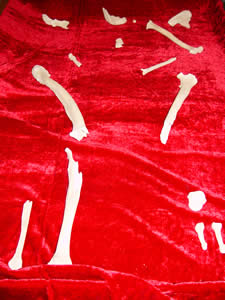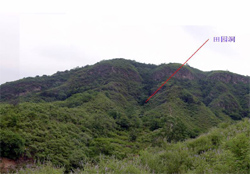
Credit: IVPP

In a cave nearby the site where the world famous Peking Man and Upper Cave Man were discovered about 70 years ago, CAS researchers have unearthed skeletal materials of a man who is thought to have lived about 25,000 years ago.
In a cave located in Beijing's Zhoukoudian, where the world famous Peking Man and Upper Cave Man were discovered about 70 years ago, researchers from the CAS Institute of Vertebrate Paleontology and Paleoanthropology (IVPP) have unearthed skeletal materials of a man who is thought to have lived about 25,000 years ago.
The fauna recovered from the cave suggest that the fossilized human remains were of late Homo Sapiens of the late Pleistocene age, according to Wu Xinzhi, a CAS member with IVPP.
The find is the only existing human fossils from this period in Beijing, says CAS Vice President Chen Yiyu. A complete skull from the same period, Upper Cave Man (or Shangdindong Man about 18,000 yeas old), was discovered in 1930, but was lost during the war against Japanese aggression from 1937 to 1945.
In 2001, workers with Beijing Tianyuan forestry farm discovered a cave (now named Tianyuan Cave) containing animal fossils while looking for a spring. A scientific excavation was officially started on June 16 by a research team headed by Prof. Tong Haowen from IVPP.
Experts say the unearthed human fossils, likely to be the ones of an adult male, are mostly in fragments, and the bones are separated from each other. They include a mandible (with teeth), clavicles, shoulder bones, radius, vertebrae, thighbones, fibula, calcanei and phalanges. Several scattered teeth are also found, but they seem to belong to another individual. The age of the adult and stratigraphic age of the earth layer in which it was buried are to be identified.
The fossils of 26 mammals have been identified so far, mostly belonging to deer and hedgehog remains. There are dark brown marks on some animal fossils, which are thought to be caused by burning.
Rudimentary scrutiny by Wu and other experts indicates the human fossils were 25,000 years old, in the period of modern Homo sapiens anatomically in configuration. The animal fossils likely belong to the Epileistocene period, dating from 10,000 to 100,000 years ago.
Up to 63 % of the mammal species discovered in Tianyuan Cave were also discovered in the Upper Cave, but the fossils of hog-nosed badgers and musk deer only appeared in Tianyuan Cave.
So far, only half of the exposed area of the Tianyuan Cave site had been excavated, and there was still huge potential for new discoveries, Wu said.








